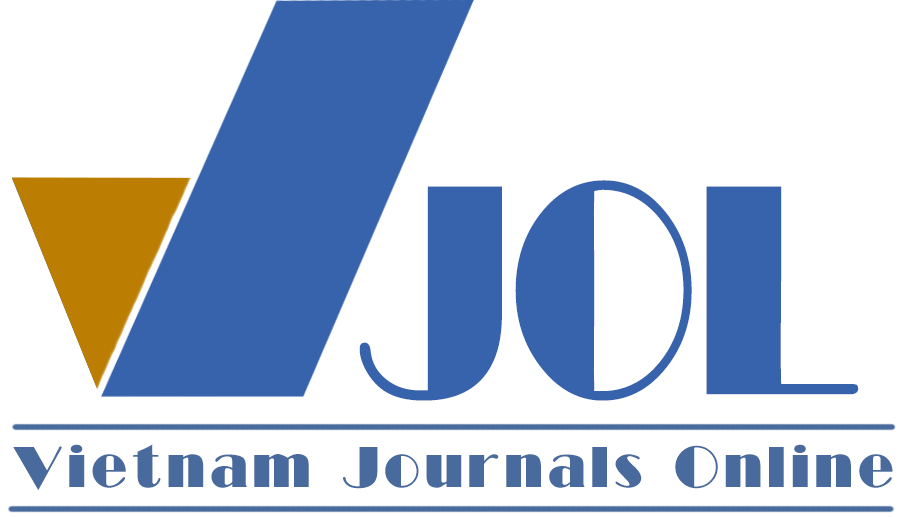The nexus of climatic change, socio-economic factors, and migration in Asia
Authors
DOI: https://doi.org/10.57110/vnu-jeb.v5i4.274Keywords:
Climate change, socio-economic, political, demographic, migration, AsiaReferences
AboElsoud, M. E., AlQudah, A., & Elish, E. (2020). Does a change in immigration affect the unemployment rate in host countries? Evidence from Australia. Journal of Applied Economics, 23(1), 21-43. https://doi.org/10.1080/15140326.2019.1684740
Achtnich, M. (2022). Waiting to move on: Migration, borderwork and mobility economies in Libya. Geopolitics, 27(5), 1376-1389. https://doi.org/10.1080/14650045.2021.1919626
Agba, A. O., Akpanudoedehe, J. J., Ojong, F. E., & Agba, M. S. (2021). Climate change, adaptation, and global jobs: Lessons and urgent policy options for Africa. Quantitative Economics and Management Studies, 2(3), 163-181. https://doi.org/10.35877/454ri.qems298
Arisman, A., & Jaya, R. K. (2020). Labour migration in ASEAN: Indonesian migrant workers in Johor Bahru, Malaysia. Asian Education and Development Studies, 10(1), 27-39. https://www.emerald.com/insight/2046-3162.htm
Backhaus, A., Martinez-Zarzoso, I., & Muris, C. (2015). Do climate variations explain bilateral migration? A gravity model analysis. IZA Journal of Migration, 4(1), 3. https://doi.org/10.1186/s40176-014-0026-3
Begossi, A. (1999). Caiçaras, caboclos and natural resources: Rules and scale patterns. Ambiente & Sociedade, 5, 55-67. https://doi.org/10.1590/S1414-753X1999000200005
Beine, M., & Parsons, C. R. (2017). Climatic factors as determinants of international migration. CESifo Economic Studies, 63(4), 386-402. https://doi.org/10.1093/cesifo/ifx017
Beyer, R. M., Schewe, J., & Lotze-Campen, H. (2022). Gravity models do not explain, and cannot predict, international migration dynamics. Humanities and Social Sciences Communications, 9(1), 1-10. https://doi.org/10.1057/s41599-022-01067-x
Black, R., Bennett, S. R. G., Beddington, J. R., & M. Thomas, S. (2011). Migration as adaptation. https://www.nature.com/articles/478477a
Cattaneo, C., Beine, M., Fröhlich, C. J., Kniveton, D., Martinez-Zarzoso, I., Mastrorillo, M., & Schraven, B. (2019). Human migration in the era of climate change. Review of Environmental Economics and Policy, 13(2), 189–206. https://doi.org/10.1093/reep/rez008
Chen, J., & Mueller, V. (2019). Climate-induced cross-border migration and change in demographic structure. Population and Environment, 41(2), 98-125. https://doi.org/10.1007/s11111-019-00328-3
Cottier, T., & Shingal, A. (2021). Migration, trade and investment: Towards a new common concern of humankind. Journal of World Trade, 55(1), 51-76. https://doi.org/10.54648/trad2021002
Curran, S., & Agardy, T. (2002). Common property systems, migration, and coastal ecosystems. Ambio, 31, 303-305. http://doi.org/10.1639/0044-7447(2002)031[0303:CPSMAC]2.0.CO;2
Czaika, M., & de Haas, H. (2017). The effect of visas on migration processes. International Migration Review, 51(4), 893-926. https://www.jstor.org/stable/45116670
Dallmann, I., & Millock, K. (2017). Climate variability and inter-state migration in India. CESifo Economic Studies, 63(4), 560-594. https://doi.org/10.1093/cesifo/ifx014
Espinosa, A. M., & Díaz-Emparanza, I. (2021). The long-term relationship between international labour migration and unemployment in Spain. Journal of International Migration and Integration, 22(1), 145-166. http://doi.org/10.1007/s12134-019-00716-6
Falco, C., Galeotti, M., & Olper, A. (2019). Climate change and migration: Is agriculture the main channel? Global Environmental Change, 59, 101995. https://doi.org/10.1016/j.gloenvcha.2019.101995
Feng, S., & Oppenheimer, M. (2012). Applying statistical models to the climate-migration relationship. Proceedings of the National Academy of Sciences, 109(43), E2915–E2915. https://doi.org/10.1073/pnas.1212226109
Gray, C., & Bilsborrow, R. (2013). Environmental influences on human migration in rural Ecuador. Demography, 50(4), 1217–1241. https://doi.org/10.1007/s13524-012-0192-y
Harris, J. R., & Todaro, M. P. (1970). Migration, unemployment and development: A two-sector analysis. The American Economic Review, 60(1), 126–142. https://www.jstor.org/stable/1807860
Hunter, R. M., Davie, C., Rudd, A., Thompson, A., Walker, H., Thomson, N., Mountford, J., Schwamm, L., Deanfield, J., Thompson, K., Dewan, B., Mistry, M., Quoraishi, S., & Morris, S. (2013). Impact on clinical and cost outcomes of a centralized approach to acute stroke care in London: A comparative effectiveness before and after model. PloS One, 8(8), e70420. https://doi.org/10.1371/journal.pone.0070420
Huynh, H. H, & Vo, D. H. (2023). The effects of migration on unemployment: New evidence from the Asian Countries. Sustainability. 15(14), 11385. https://doi.org/10.3390/su151411385
Jha, C. K., Gupta, V., Chattopadhyay, U., & Amarayil Sreeraman, B. (2017). Migration as adaptation strategy to cope with climate change: A study of farmers’ migration in rural India. International Journal of Climate Change Strategies and Management, 10(1), 121-141. https://doi.org/10.1108/IJCCSM-03-2017-0059
Kaenzig, R., & Piguet, E. (2013). Migration and climate change in Latin America and the Caribbean. Global Migration Issues, 155–176. https://doi.org/10.1007/978-94-007-6985-4_7
Lee, E. S. (1966). A theory of migration. Demography, 3(1), 47–57. https://doi.org/10.2307/2060063
Long, H., Li, J., & Liu, H. (2022). Internal migration and associated carbon emission changes: Evidence from cities in China. Energy Economics, 110, 106010. https://doi.org/10.1016/j.eneco.2022.106010
Marchiori, E., & Cantoni, L. (2015). The role of prior experience in the perception of a tourism destination in user-generated content. Journal of Destination Marketing & Management, 4(3), 194–201. https://doi.org/10.1016/j.jdmm.2015.06.001
Massey, D. S., Arango, J., Hugo, G., Kouaouci, A., Pellegrino, A., & Taylor, J. E. (1993). Theories of international migration: A review and appraisal. Population and Development Review, 19(3), 431–466. https://doi.org/10.2307/2938462
Mastrorillo, M., Licker, R., Bohra-Mishra, P., Fagiolo, G., D. Estes, L., & Oppenheimer, M. (2016). The influence of climate variability on internal migration flows in South Africa. Global Environmental Change, 39, 155–169. https://doi.org/10.1016/j.gloenvcha.2016.04.014
Minehan, S., & Wesselbaum, D. (2023). Do climate change expectations drive migration? Evidence from migration flows towards OECD countries. Global and Planetary Change, 227, 104188. https://doi.org/10.1016/j.gloplacha.2023.104188
Mueller, V., Sheriff, G., Dou, X., & Gray, C. (2020). Temporary migration and climate variation in eastern Africa. World Development, 126, 104704. https://doi.org/10.1016/j.worlddev.2019.104704
Muñoz-Mora, J. C., Aparicio, S., Martinez-Moya, D., & Urbano, D. (2022). From immigrants to local entrepreneurs: Understanding the effects of migration on entrepreneurship in a highly informal country. International Journal of Entrepreneurial Behavior & Research, 28(9), 78-103. https://doi.org/10.1108/IJEBR-07-2021-0615
Nawrotzki, R. J., & Bakhtsiyarava, M. (2017). International climate migration: Evidence for the climate inhibitor mechanism and the agricultural pathway. Population, Space and Place, 23(4), e2033. https://doi.org/10.1002/psp.2033
Nawrotzki, R. J., Riosmena, F., & Hunter, L. M. (2013). Do rainfall deficits predict U.S.-bound migration from rural Mexico? Evidence from the Mexican Census. Population Research and Policy Review, 32(1), 129–158. https://doi.org/10.1007/s11113-012-9251-8
Ravenstein, E. G. (1885). The laws of migration. Journal of the Statistical Society of London, 48(2), 167–235. https://doi.org/10.2307/2979181
Raymer, J., Liu, N., & Bai, X. (2019). Age articulation of Australia’s international migration. In R. Franklin (Ed.), Population, place and spatial interaction (pp. 171–200). Springer. https://doi.org/10.1007/978-981-13-9231-3_10
Schneider, O. (2022). Labour migration in the European Union: The case of Central and Eastern Europe. Economic Annals, 67(233), 7-38. http://doi.org/10.2298/EKA2233007S
Sedova, B., & Kalkuhl, M. (2020). Who are the climate migrants and where do they go? Evidence from rural India. World Development, 129. https://doi.org/10.1016/j.worlddev.2019.104848
Sloat, L. L., Davis, S. J., Gerber, J. S., Moore, F. C., Ray, D. K., West, P. C., & Mueller, N. D. (2020). Climate adaptation by crop migration. Nature Communications, 11(1), Article 1. https://doi.org/10.1038/s41467-020-15076-4
Thiede, B., Gray, C., & Mueller, V. (2016). Climate variability and inter-provincial migration in South America, 1970-2011. Global Environmental Change : Human and Policy Dimensions, 41, 228–240. https://doi.org/10.1016/j.gloenvcha.2016.10.005
Thomas, M. J. (2019). Employment, education, and family: Revealing the motives behind internal migration in Great Britain. Population, Space and Place, 25(4), e2233.
Tombe, T., & Zhu, X. (2019). Trade, migration, and productivity: A quantitative analysis of China. American Economic Review, 109(5), 1843-1872. http://doi.org/10.1257/aer.20150811
Tomohara, A. (2019). Migrant and business network effects on intellectual property trade: Evidence from Japan. Economic Analysis and Policy, 62, 131-139. https://doi.org/10.1016/j.eap.2019.01.007
United Nations. (2020). World social report 2020: Inequality in a rapidly changing world. United Nations. https://www.un.org/development/desa/dspd/wp-content/uploads/sites/22/2020/02/World-Social-Report2020-FullReport.pdf
Withers, M., Henderson, S., & Shivakoti, R. (2022). International migration, remittances and COVID-19: Economic implications and policy options for South Asia. Journal of Asian Public Policy, 15(2), 284-299. https://doi.org/10.1080/17516234.2021.1880047
Downloads
Downloads
Published
Abstract View
PDF Downloaded
How to Cite
Issue
Section
License
Copyright (c) 2025 Huynh Hien Hai

This work is licensed under a Creative Commons Attribution-NonCommercial 4.0 International License.
by VNU Journal of Economics and Business
Most read articles by the same author(s)
- Huynh Hien Hai, How does bilateral trade and other socio-economic factors influence: The international migration flows in ASEAN countries , VNU University of Economics and Business: Vol. 3 No. 2






